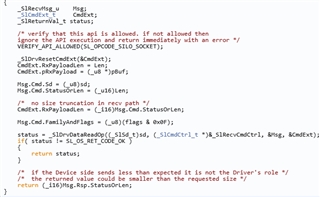Other Parts Discussed in Thread: CC3200
Tool/software:
Dear Texas Instruments Support Team,
I am experiencing SSL read errors with the CC3120 Wi-Fi network processor, particularly when using certain routers. The issue seems to be related to the TCP keep-alive timeout settings. When the timeout is set to 5 minutes, I encounter SSL read errors, but reducing the timeout to 3 minutes resolves the issue. Additionally, these errors appear to be triggered by Wi-Fi interrupts.
Could you please provide guidance on the following:
-
Impact of TCP Keep-Alive Timeout: Why does reducing the TCP keep-alive timeout from 5 minutes to 3 minutes resolve the SSL read errors? Are there specific network conditions or router configurations that could be causing this behavior?
-
Wi-Fi Interrupts: How do Wi-Fi interrupts influence SSL read operations, and what steps can be taken to mitigate these errors?
-
Router Compatibility: Are there known issues with certain routers that could affect SSL/TLS connections with the CC3120? What configurations should be checked or adjusted to ensure stable connections?
-
Best Practices: What are the recommended best practices for configuring TCP keep-alive settings and handling SSL/TLS connections with the CC3120 to avoid such errors?


